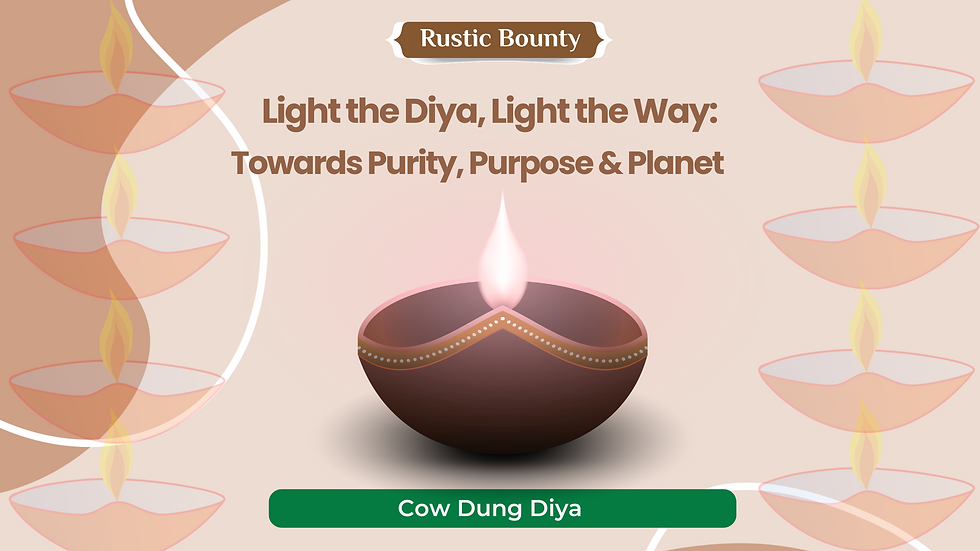Cow Dung: The Timeless Treasure
- Inner Search Foundation NGO
- Apr 30
- 2 min read
Celebrated since Vedic times for its purity and eco-friendliness, cow dung continues to prove its relevance even today, especially in areas such as sustainability, environmental health, and rural well-being. While many ancient beliefs have faded with the advancement of knowledge—like the flat Earth theory or the geocentric model—some age-old insights reflect timeless wisdom. One such insight is the sacred and eco-friendly value of cow dung. Today, scientific inquiry and growing environmental awareness are reaffirming what the Vedas and traditional rural wisdom have long upheld.
Why is Cow Dung Considered Holy and Environment-Friendly?
Since time immemorial, cow dung has been used not only for rituals but also in daily life. In the absence of paints, it was applied to coat and protect mud houses, offering a natural, eco-friendly way to keep spaces clean and pest-free. This practice continues in rural areas, while in urban settings, its purifying and eco-friendly properties are increasingly being recognized, with people seeking ways to incorporate it into their lives.
Cow dung contains beneficial microbes and enzymes like Actinomycetes and Bacillus which have natural antibacterial and antifungal properties. Unlike stools from carnivorous or even omnivorous animals, cow dung is herbivorous in origin, making it less toxic and more decomposable. Its smoke, when used as a fuel or in dhoop sticks, acts as a natural mosquito repellent and purifies the air.
In a world battling climate change, cow dung is nature’s gift. It can be used as:
Biogas fuel (methane-producing, renewable)
Manure rich in organic nitrogen and phosphorus
Eco-friendly fire starter for rituals
Compost for organic farming
Raw material for incense sticks, cups, diyas, and bricks
Unlike synthetic fertilizers or chemical fuels, cow dung leaves zero carbon footprint, enriching rather than depleting the Earth.
In Ayurveda, cow dung ash (Gomaya bhasma) is known to detoxify and treat various skin diseases.
From Govardhan Puja to Pongal and Bihu, cow dung is used to create figurines, paint symbols, and decorate homes. In many Indian villages, cow dung patties (uplas) are still used to cook food, a practice that survives the test of time and modernization.
It’s intriguing how science today validates the same values and practices that have existed for thousands of years in rural India. Cow dung has even made its way into construction (eco-bricks), air purifiers, and even paper production. Startups and social enterprises are now promoting cow dung-based products as sustainable alternatives to plastics, wood, and chemical fertilizers.
While the world has changed its views on planets, galaxies, and even basic geography, the respect for cow dung in Indian culture has not only remained but grown stronger, with ecological urgency breathing new life into these practices.
At Rustic Bounty, we carry this timeless wisdom forward—offering eco-friendly, cow dung-based products that honour tradition while serving modern sustainability needs.




Comments